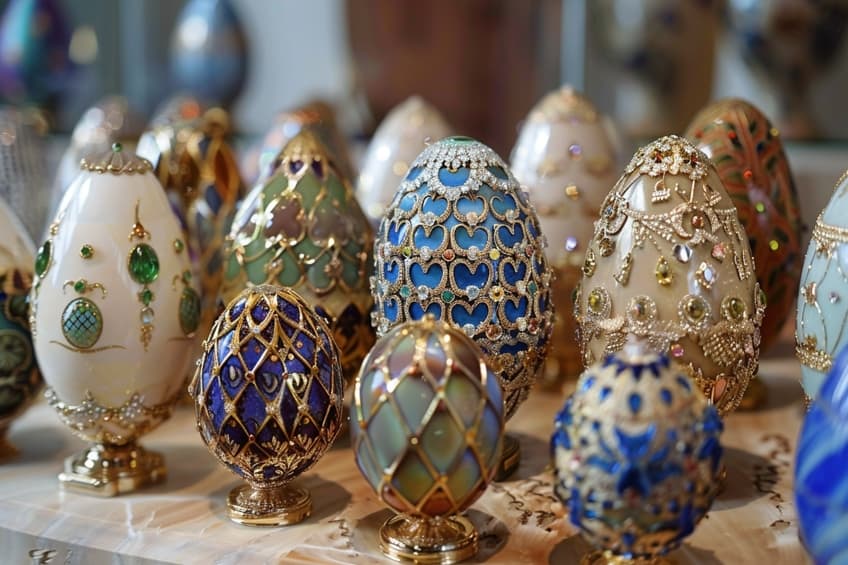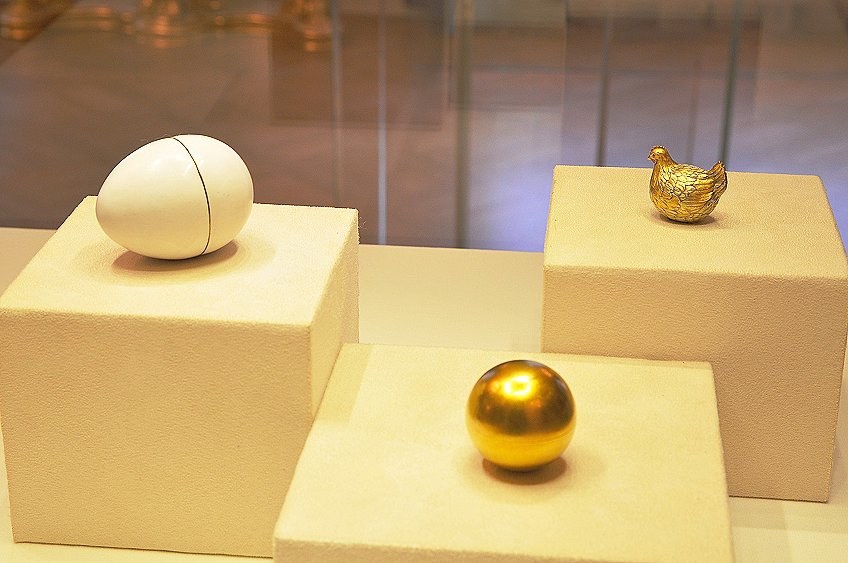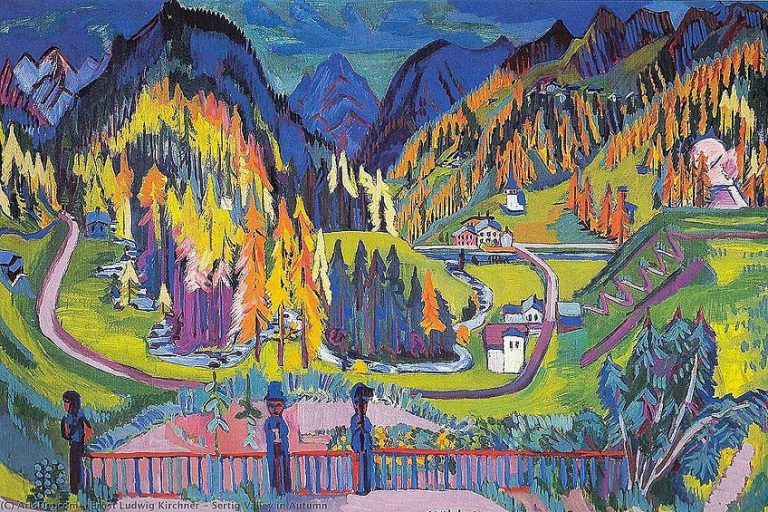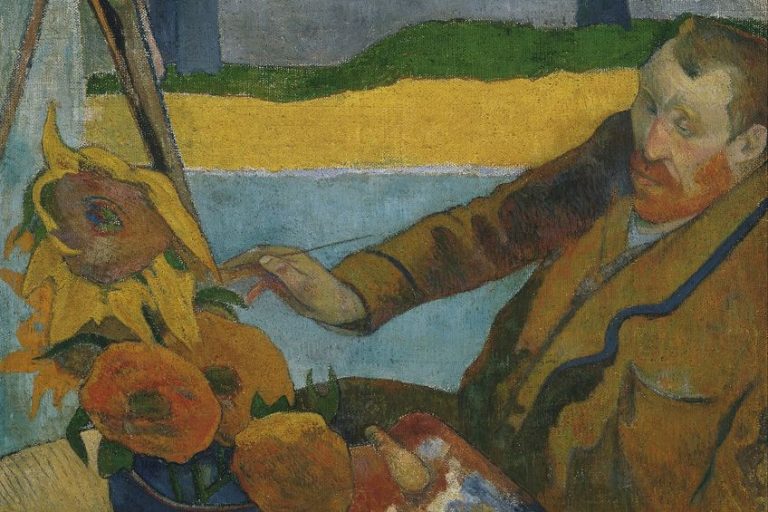What Is a Fabergé Egg? – Egg-straordinary Art
Fabergé eggs are exquisite and highly sought-after treasures in the world of antiques. These ornate eggs, created by the House of Fabergé under the supervision of renowned jeweler Peter Carl Fabergé, are renowned for their intricate designs, fine craftsmanship, and historical significance. Originating in Russia during the late 19th and early 20th centuries, Fabergé eggs were originally commissioned as Easter gifts for the Russian imperial family. Each egg is a unique masterpiece, often adorned with precious metals, gemstones, and intricate enamel work, making them prized possessions among collectors and art enthusiasts worldwide. In this article, we delve into the fascinating history and allure of Fabergé eggs, exploring what makes them such iconic and cherished pieces of art.
Key Takeaways
- Fabergé eggs are jeweled art pieces created by the House of Fabergé.
- They were initially made for the Russian imperial family, starting with the Golden Hen egg.
- Fabergé eggs are recognized for their exceptional artistry and historical value.

What Is a Fabergé Egg?
A Fabergé egg is a jeweled egg crafted by the House of Fabergé, which was a prominent jewelry firm operating out of Saint Petersburg, Russia, in the late 19th and early 20th centuries. These ornate creations gained fame for their extravagant artistry and the intricate surprises they often hid within. Peter Carl Fabergé, the mastermind behind these luxurious objects, initially created them for the Russian imperial family, starting with the Golden Hen egg in 1885. The exquisite craftsmanship of each egg and their limited number make them valuable artistic and cultural treasures.
While more than 50 were crafted for the Russian Imperials, the total number of Fabergé eggs created stands at approximately 69, with a known 57 that have survived to the present day.
These fragile artifacts serve not just as marvels of the jeweler’s art but as vivid historical emblems of the opulence and tumultuous narratives of the Romanovs, the Russian rulers of the time. The eggs were originally made for the Russian imperial family, with the Imperial Coronation egg being one of the most notable examples. Fifty Imperial eggs were created as Easter gifts for family members, symbolizing luxury and opulence. Fabergé eggs are typically 3-5 inches tall, showcasing intricate designs on a small scale. Each egg is a labor of love, taking around 1-2 years to create, reflecting the meticulous craftsmanship and attention to detail.

One of the most enchanting aspects of Fabergé eggs is the surprises hidden inside, which can include miniature portraits, functioning clocks, and even charming automatons, adding an element of delightful surprise to these already exquisite treasures. Out of the 69 known Fabergé eggs, 57 have survived, each one a unique art piece displaying the skills of the jewellers of Fabergé’s time. These eggs often contained hidden surprises, such as the miniature replicas of the Imperial Crown or a tiny peacock that could spread its feathers.
Today, Fabergé eggs are highly sought after by collectors and are considered to be some of the most valuable and iconic artifacts of the period, symbolizing the luxury of the Romanov dynasty and the craftsmanship of Russian jewelers. Their allure persists, capturing the fascination of people around the world.
Historical Significance
The Fabergé eggs embody a unique blend of opulence and history, representing royal traditions and revolutionary change.
Origin and Commissioning
The story of the Fabergé eggs begins with Tsar Alexander III of Russia, who in 1885 commissioned the first Imperial Easter egg as a gift for his wife, Empress Maria Feodorovna. This initiated an annual tradition that continued until 1917 with Nicholas II, Alexander’s son, presenting eggs to his wife, Empress Alexandra, as well as to his mother. Created by the House of Fabergé in St. Petersburg, these exquisite creations celebrated Easter, an important religious holiday in Russia, while showcasing exceptional craftsmanship.

Cultural Impact
Fabergé eggs wielded cultural sway as emblems of the lavishness and artistry of Romanov rule. Post-Russian Revolution, these eggs became symbols of a bygone era, with several leaving Russia as a result of the Bolsheviks selling them to acquire foreign currency. Prominent collectors included Armand Hammer and the Duchess of Marlborough.
Today, Fabergé eggs are displayed in museums such as the Fabergé Museum in Russia and the Royal Collection in the UK, attracting enthusiasts and symbolizing Russia’s cultural heritage.
Features of the Eggs
Each of the approximately 50 Imperial Easter eggs contains meticulous details and often contained a surprise. Notable eggs include:
- The Hen Egg (1885): The first Imperial egg with a matte “shell” opening to reveal a gold yolk, containing a multicolored gold hen that also opens.
- The Coronation Egg (1897): Contains a precise replica of the Imperial coach used in Nicholas II’s Coronation.
- The Third Imperial Egg (1887): Features a lavish exterior and a surprise that was lost to history.
Crafted from gold, diamonds, and enamel, the surprise element became a hallmark, with some eggs commemorating significant events like the Russo-Japanese War or featuring replicas of the Imperial Crown of Russia.

Artistry and Craftsmanship
Fabergé eggs embody the pinnacle of luxury and are a testament to the sophisticated techniques and materials employed by master craftsmen. The meticulous process that went into each creation made them not merely Easter eggs, but also treasured works of decorative art.
Materials and Techniques
Fabergé eggs were famed for their use of extravagant materials and intricate techniques. Precious metals like gold and silver formed the core structure, while luxury gemstones such as diamonds, rubies, and sapphires added sparkle and allure. Enamel work of various types was a hallmark, providing vibrant colours and a glass-like finish. Unique materials such as rock crystal, nephrite, and masterfully carved Karelian birch added diversity to the collection. Henrik Wigström and other designers often incorporated surprises, such as miniatures or pendants, that enhanced the eggs’ mystique.

Time Spent on Each Egg
The creation of each Fabergé egg could take up to two years, involving collaboration among diverse artisans with different specialties. The design and production process demanded not only time but also exacting precision to ensure that each finished piece was flawless.
Renowned Craftsmen and World Collections
Fabergé eggs were the brainchild of Peter Carl Fabergé, a visionary jeweler. Chief craftsmen like Henrik Wigström played crucial roles in bringing Fabergé’s designs to life. These eggs now reside in prestigious collections worldwide, such as those of Viktor Vekselberg, Malcolm Forbes, and institutions like the Hermitage Museum, Kremlin Armory, Walters Art Museum, and the Virginia Museum of Fine Arts. Their scarcity and the fame of their collectors speak to their exclusivity and value.

Notable Fabergé Eggs
Some of the most notable Fabergé eggs are celebrated for their exceptional beauty, historical significance, and intricate craftsmanship. Among these treasures is the Imperial Coronation Egg, crafted in 1897 to commemorate the coronation of Tsar Nicholas II and Tsarina Alexandra Feodorovna. This egg features a stunning design with a translucent golden shell, adorned with diamond-studded laurel wreaths and portraits of the imperial couple. Another iconic egg is the Winter Egg from 1913, notable for its intricate frost motif in white enamel, embellished with diamond snowflakes and a miniature replica of the palace at Gatchina.
These masterpieces exemplify the extraordinary artistry and opulence associated with Fabergé eggs, making them highly coveted among collectors and enthusiasts worldwide.
Imperial Coronation Egg
Crafted in 1897, this egg was a gift to Empress Alexandra Fyodorovna after her coronation. It’s known for its intricate design, including a replica of the Russian Imperial coach.
Moscow Kremlin Egg
From 1906, this egg reflects the architecture of the Uspenski Cathedral. It is one of the largest eggs created by Fabergé and features remarkable detail.
Winter Egg
Created in 1913, the Winter Egg is hailed for its exceptional craftsmanship. It emulates a frost-covered crystal made encrusted with diamonds to imitate ice and snow.
Third Imperial Easter Egg
Once considered lost, this 1887 egg was famously rediscovered in 2011. Its design is simple yet elegant, featuring gold detailing and sapphires.
Renaissance Egg
Made in 1894, this egg boasts a design inspired by the art and architecture of the Renaissance period. It is adorned with enamel and precious jewels.

Fabergé eggs stand as timeless symbols of unparalleled craftsmanship, luxury, and artistic innovation. Their legacy continues to captivate generations, embodying the opulence and elegance of an era gone by. As cherished relics of history, Fabergé eggs not only serve as exquisite collectibles but also as reminders of the skill and creativity of artisans who crafted them. Their enduring appeal in the world of antiques and artistry serves as a testament to the enduring fascination with these iconic treasures.
Frequently Asked Questions
Why Do Fabergé Eggs Command Such High Prices in the Market?
Fabergé eggs are renowned for their exceptional craftsmanship and the precious materials used in their creation, including gold, platinum, and an array of gemstones. Their rarity, coupled with their historical significance as emblems of the opulence of the Russian Imperial family, drives the high prices they fetch at auctions.
How Many Fabergé Eggs Were Created, and Do They All Still Exist?
Originally, Peter Carl Fabergé’s studios crafted a total of 69 eggs, of which 57 are known to survive today. Some were lost after the Russian Revolution, while others are housed in museums and private collections around the world.
What Was the Original Purpose of Fabergé Eggs in the Context of Their Creation?
The original purpose of Fabergé eggs was to serve as opulent Easter gifts within the Russian Imperial family, starting when Tsar Alexander III commissioned the first egg for his wife, Tsarina Maria Fyodorovna. They evolved into extravagant expressions of love and tradition, highlighted by their intricate details and surprises hidden within.
Isabella studied at the University of Cape Town in South Africa and graduated with a Bachelor of Arts majoring in English Literature & Language and Psychology. Throughout her undergraduate years, she took Art History as an additional subject and absolutely loved it. Building on from her art history knowledge that began in high school, art has always been a particular area of fascination for her. From learning about artworks previously unknown to her, or sharpening her existing understanding of specific works, the ability to continue learning within this interesting sphere excites her greatly.
Her focal points of interest in art history encompass profiling specific artists and art movements, as it is these areas where she is able to really dig deep into the rich narrative of the art world. Additionally, she particularly enjoys exploring the different artistic styles of the 20th century, as well as the important impact that female artists have had on the development of art history.
Learn more about Isabella Meyer and the Art in Context Team.
Cite this Article
Isabella, Meyer, “What Is a Fabergé Egg? – Egg-straordinary Art.” Art in Context. March 20, 2024. URL: https://artincontext.org/what-is-a-faberge-egg/
Meyer, I. (2024, 20 March). What Is a Fabergé Egg? – Egg-straordinary Art. Art in Context. https://artincontext.org/what-is-a-faberge-egg/
Meyer, Isabella. “What Is a Fabergé Egg? – Egg-straordinary Art.” Art in Context, March 20, 2024. https://artincontext.org/what-is-a-faberge-egg/.











